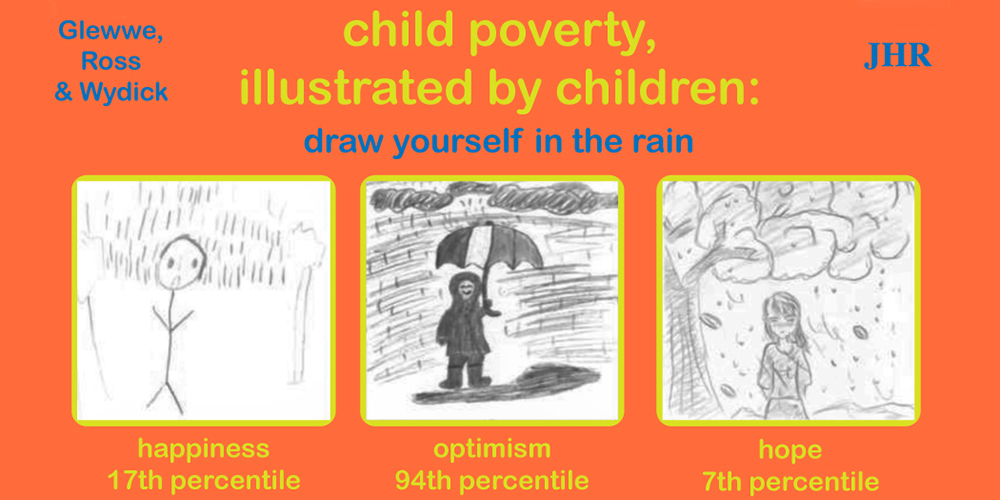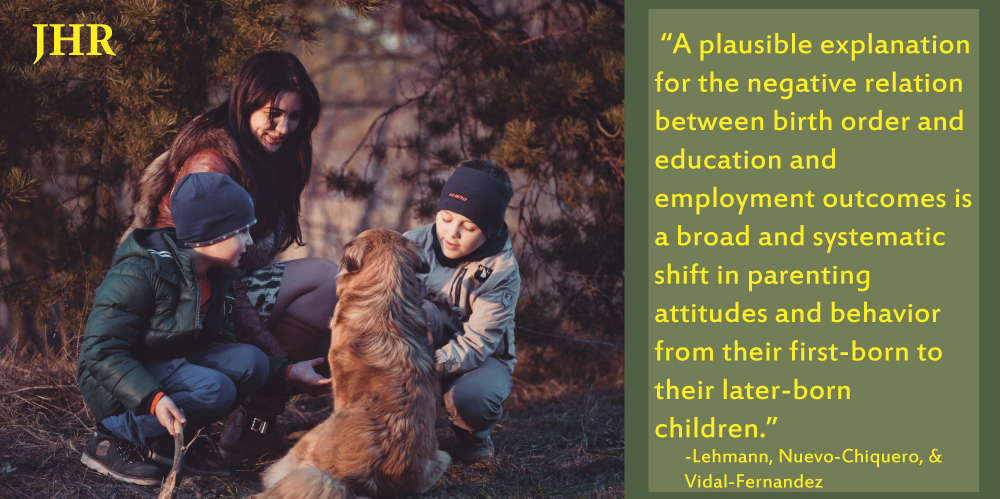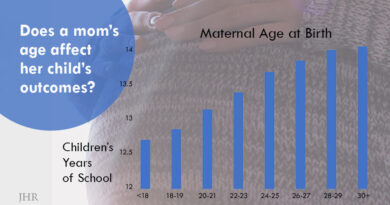Children’s Self-Portraits Show that Child Sponsorship Increases Hope
The role of psychological attributes such as hope and self-efficacy in escaping poverty has attracted increasing attention among economists, policy-makers, and development practitioners. Researchers recently borrowed a technique from clinical psychology to learn what self-portraits can tell us about the effectiveness of a child sponsorship program in the slums of Jakarta.
Crucial questions in this area of research include how positive psychological attributes in early development affect socioeconomic outcomes, and whether interventions to reduce poverty increase such attributes.
Paul Glewwe (University of Minnesota), Phillip H. Ross (Boston University), and Bruce Wydick (University of San Francisco) examined the impact of an international child sponsorship program on the psychology of Indonesian children in the slums of Jakarta. They employed a novel program evaluation technique: a quantified analysis of children’s self-portraits.
Children participating in the program, children on the waitlist, and their non-participant siblings were given a box of 24 colored pencils and asked to “draw a picture of yourself in the rain.” The researchers coded salient characteristics of the drawings—such as seeking shelter from the rain, use of dark over light colors, or smiling—that empirical studies in clinical psychology link with different facets of psychological health. Importantly, these represent observed behavior that can reveal complex facets of mental processes and emotions of children more reliably than self-reported responses to a survey questionnaire.
The program required that children be nine years of age or younger to enter the program and the number of age-eligible children exceeded the number able to be sponsored, resulting in a waitlist. This allowed the researchers to compare sponsored children with those on the waitlist as well as their siblings who were, by chance, slightly too old to participate when the program entered their community. The researchers found that international child sponsorship significantly raises sponsored children’s levels of hope, happiness, and self-efficacy.
This study shows the potential for programs that simultaneously raise hope and provide the resources to achieve those hopes to release children from the constraints of poverty.
Read the full study in the Journal of Human Resources: “Developing Hope Among Impoverished Children: Using Child Self-Portraits to Measure Poverty Program Impacts” by Paul Glewwe, Phillip H. Ross, and Bruce Wydick




